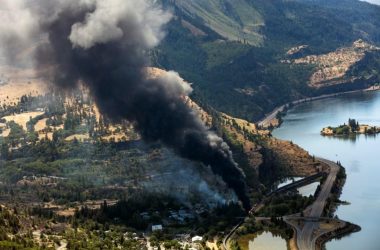As inflation continues to increase at a break-neck pace, nearly 5,000 Malheur County residents heating their homes with natural gas will see their heating bill go up by over 25% this winter.
Mark Hanson, a spokesperson with Cascade Natural Gas, said in a Wednesday, Oct. 26, email that the average monthly bill after Nov. 1 will go from $57.46 to $72.55.
Hanson said the Oregon Public Utilities Commission, the state agency tasked with approving the rate increase, approved Cascade’s request to bump the price up on Tuesday, Oct. 25.
Hanson said the increase is based on a 30-year weather average and average use of 62 therms a month.
The increase, according to Hanson, affects 4,850 customers in Malheur County.
Meanwhile, Brad Bowlin with Idaho Power said that since last year, prices for average Malheur County residents jumped nearly 8%, which works out to $8.84 per month.
Bowlin said some might see their bills increase if temperatures drop and they are using more energy for heating.
As for home heating oil, Brad Holland, district manager with Campo and Poole, a prominent local home heating oil provider, said the cost parallels gas prices.
“What you see at the gas pump,” Holland said, “is what you’ll see happening for furnace oil tanks.”
Holland noted that diesel is a similar product. However, he said, the price may not match the street price, but the trend is the same.
Holland said the average monthly price is challenging to gauge as variables include the tank’s size and the unit’s efficiency. However, the U.S. Energy Information Administration reports that the price of a gallon of residential heating oil as of March was just under $5 per gallon. Holland said heating oil prices have remained flat for the last year.
Factors that play into energy cost increases
Hanson said the main reason for the natural gas price increase is demand exceeding supply. Over a hot summer for most of the country, a record amount of natural gas was used for electric generation. Additionally, Hanson said that due to the economic sanctions placed on Russia – a major oil exporter to Asia and Europe – after the country invaded Ukraine. Since then, the U.S. has been exporting a record amount of liquified natural gas to Asia and Europe, increasing demand, which has caused the prices to spike.
Conversions, cutting costs and incentives
Holland said that regardless of the sticker price for heating costs and the price signs at the gas station, people must do as much as possible to insulate their homes.
Jennifer Kalez with the Oregon Department of Energy said Oregonians could cut their heating costs in half with a heat pump compared to electric resistance heat, like cadet or baseboard heaters.
However, she said, that can be a costly change. Another effective option, but a more significant investment, is upgrading older single-pane windows to double-pane or triple-pane to keep more heat inside.
Chris Wilson, a spokesperson with the Energy Trust of Oregon, said people in Malheur County who are customers of Cascade Natural Gas customers could get up to a $1,400 incentive toward a more efficient gas furnace. Wilson said the Trade Ally Network provides a list of contractors who work with the organizations to pass along the incentives and savings to customers. However, according to the Energy Trust’s website, the incentive program expires at the end of the year.
Additionally, Wilson said while the page displays the incentive is $1,000, a residential program manager with the Energy Trust told him Malheur County Cascade customers could get an extra $400.
Putting the increase in heating costs into context in Malheur County
According to the Oregon Center for Public Policy, more people are experiencing poverty in the state’s rural areas than anywhere else. In Malheur County, with the highest poverty rate in the state, one in four people live in poverty. Amid skyrocketing inflation, a $10 to $15 bump in heating costs could be significant.
What is the energy cost outlook over the next six months?
Hanson said the state’s public utility commission only approves rate increases for natural gas once a year. For his part, Bowlin said that Idaho Power does not anticipate increasing rates in the next month. However, Holland said it is difficult to forecast what will occur over the next 60 days. Holland said there are s
so many factors impacting fuel prices and the economy.
“It’s been such a turbulent time over the last three, four years between covid and other components worldwide,” Holland said. “It’s really challenging time to predict what the future will hold.”
EXCELLENCE IN JOURNALISM – Available for $7.50 a month. Subscribe to the digital service of the Enterprise and get the very best in local journalism. We report with care, attention to accuracy, and an unwavering devotion to fairness. Get the kind of news you’ve been looking for – day in and day out from the Enterprise.




